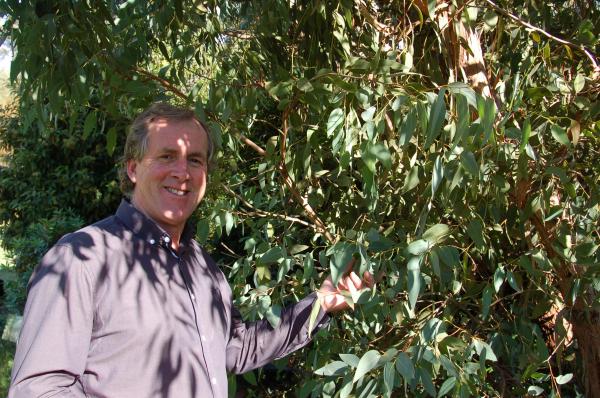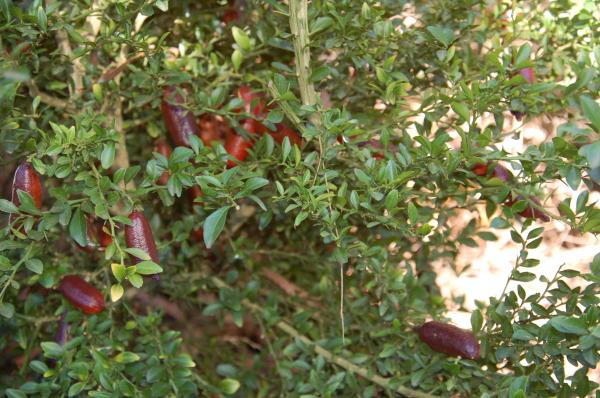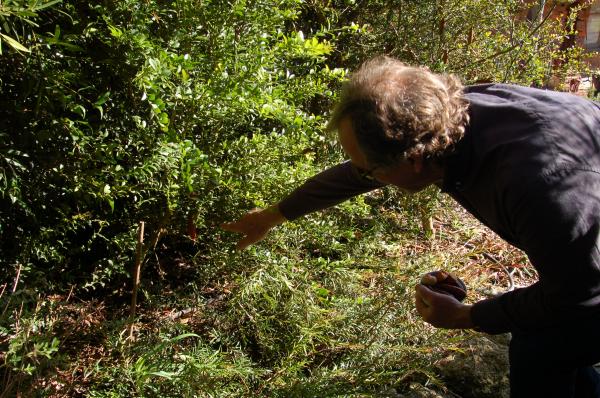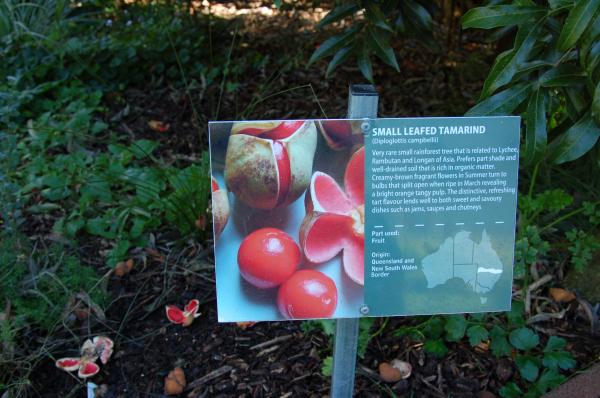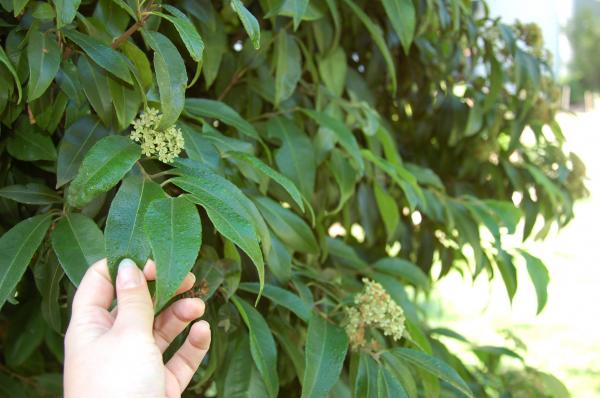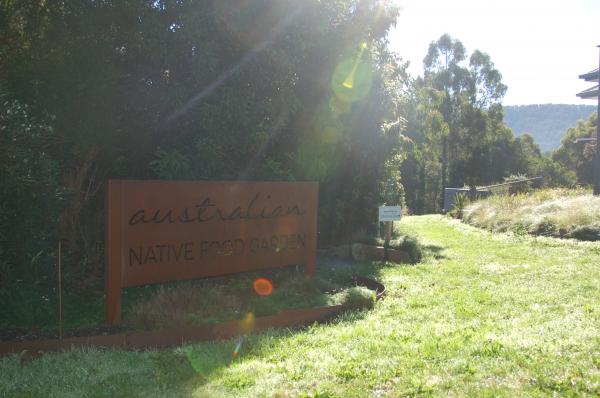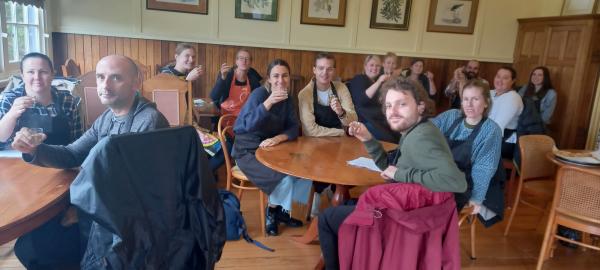
Nestled in lush greenery at the foot of the Bunyip State Forest in Tynong North lies Peppermint Ridge Farm, a ‘living classroom’ that is helping bring Australian bush food to the forefront of everyday cooking. Julie Weatherhead and Anthony Hooper have long been pioneers of Australian native produce, and their cooking classes and extensive knowledge are helping educate everyday cooks about the wonders that can be found in our very own backyards. GABRIELLA PAYNE took a stroll to learn more about this sustainable initiative.
The sounds of native birdsongs filter through the trees as Anthony Hooper, one of the owners of Peppermint Ridge Farm, takes me on a tour of the farm’s sprawling outdoor pantry.
We walk along a path tucked amongst trees and shrubs and immediately, my eyes are drawn to the traditional veggie patch lying in the sun – but Mr Hooper informs me that the real treasures are actually found in the garden we just walked through.
“You were looking at the veggie garden when you arrived, but the first thing to think about is that the food garden goes all the way up to the sign and back again, so that’s the first thing – reframing,” Mr Hooper said.
“There are 40 edible species in here, from all parts of Australia.
A lot of them are local, but not all, and the key thing about it is that from the canopy to the ground cover, they can provide really nutritious supplements or foods in their own right,” he says, as he pulls a gum leaf from an overhanging branch.
“This one is a really rare gum from New South Wales called strawberry gum.
So what you’re doing with this is you’re releasing the oils when it’s heated,” he explains as he folds the leaf and rubs it between his fingers, releasing a sweet, floral aroma that has that slight, recognisable hint of strawberry.
Mr Hooper explains that the strawberry gum leaves should be thought of “like a bay leaf” and can be used to infuse both sweet and savoury dishes – something that his wife Julie Weatherhead knows a thing or two about.
With over 20 years experience cooking with native foods and a background in environmental science and ecology to boot, Ms Weatherhead has helped open hundreds of peoples’ eyes to the wonderful world of native ingredients over the years.
Through the cooking classes and tours she and her husband run at Peppermint Ridge and her successful book ‘Native Foods Harvest’, students of all ages have learnt just how easy and delicious cooking with Australian ingredients can be – all of which can be grown sustainably in your own backyard!
“The point of the classes is that I’m trying to make native foods accessible to everyone, so just everyday cooks and chefs – because I’ve found there’s not a lot of contemporary culinary knowledge about how to use them, and so people then just think, ‘well I won’t bother’,” Ms Weatherhead said.
“But my dream is to have people buy the plants, grow them in their garden and then they’ve got their own kitchen, their own native food garden that they can use everyday.”
As part of the native cooking class, students are taken on a tour of the gardens at Peppermint Ridge where they learn about optimal gardening and harvesting techniques for Australian produce, before doing some foraging and gathering of their own ingredients.
Ms Weatherhead then leads the group through an informative cooking class, where participants make a range of both savoury and sweet dishes with their foraged food – which eventually ends up being enjoyed as morning tea and lunch during the class.
“The plants are just so adaptable,” Ms Weatherhead said.
“You can use the plants in so many different dishes.
[For instance] lemon myrtle can replace lemons and limes, anise myrtle can replace star anise and I’ve tested them with so many different recipes and they just work beautifully, the flavours are amazing,” she said.
“We’ll make things like strawberry gum ice cream which is stunning, we might make lemon myrtle anzacs or bush food pizzas using the warrigal greens pesto as the base in our wood fired oven – I just try to show people as wide a range as I can in that short time, of how you can use the plants quite easily with simple recipes.”
Both Ms Weatherhead and Mr Hooper have been passionately sharing their love for Australian native foods long before they became “trendy” and all the rage.
“We’ve been doing this since 1995 and when we started, you literally had to almost trip people up to bring them to our stall,” Mr Hooper said.
Now that popularity and interest in native cooking is continuing to grow, Ms Hooper said that it was exciting to see their classes filling up quickly, but that there was a long way to go in terms of research into the many benefits of Aussie bush food.
“There’s just such an incredible array of native ingredients out there, I mean there are 6,000 edible Australian plants, and you think we’ve got a display garden of about 40 and we sell about 20 in our nursery, you get the idea,” he said.
“Food is a good way of connecting people to the environment.
Because you’ve got to remember, we all grew up and you were very much taught that there was nothing in the Australian bush, that it was depauperate of food and in other words you’d starve.
And in some places you possibly could – but with the Aboriginal knowledge and the growth in popularity, people are seeing that these things are really well adapted to the climate and the environment, and the amount of preparation involved is nothing like the veggie garden.”
Ms Weatherhead agreed, adding that she encouraged everyone to give cooking with native ingredients a try.
“The idea of making things easily understood and accessible has always been an interest of mine,” she said.
“I don’t like to make things complicated because then people switch off.
That’s important. It’s got to be enjoyable,” she said.
The next ‘native creative cooking school’ class at Peppermint Ridge Farm will be held on Saturday 29 May and as spaces are limited, bookings are essential.
For more information, visit https://peppermintridgefarm.com.au/


